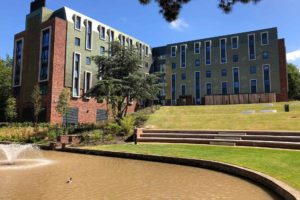How you'll learn
All programmes are taught over two semesters with examinations at the end of each semester. Modules vary from those which are assessed by examination only to others which are continuous assessment only. All programmes incorporate a substantial practical component, with an increasing emphasis on project work as you progress through to the final year. You can select your final year individual project in consultation with members of staff.
How you're assessed
Assessment is carried out through a mixture of exams, coursework and projects.
Liverpool Hallmarks
We have a distinctive approach to education, the Liverpool Curriculum Framework, which focuses on research-connected teaching, active learning, and authentic assessment to ensure our students graduate as digitally fluent and confident global citizens.
The Liverpool Curriculum framework sets out our distinctive approach to education. Our teaching staff support our students to develop academic knowledge, skills, and understanding alongside our graduate attributes:
- Digital fluency
- Confidence
- Global citizenship
Our curriculum is characterised by the three Liverpool Hallmarks:
- Research-connected teaching
- Active learning
- Authentic assessment
All this is underpinned by our core value of inclusivity and commitment to providing a curriculum that is accessible to all students.







